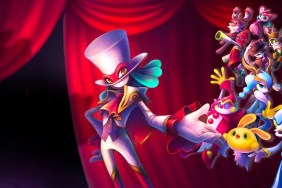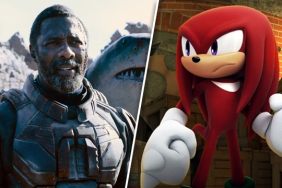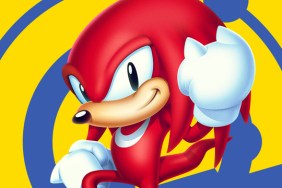Control was a pleasant surprise during Sony’s E3 2018 press conference. Sure, that extended look at The Last Of Us II looked nice, and that Kingdom Hearts III trailer finally had something new to show – I’m looking at you, Square Enix – but these were all known quantities. Control, on the other hand, immediately stood out with its Psi-Ops-inspired gameplay (remember Psi-Ops?) and Inception-but-as-a-horror-movie visual aesthetic. The twisting brickwork, the levitating bodies looking like the worst HR holiday party ever — all of it lingered long after Sony’s press conference. I wanted to know more about this game, more about this style.
And I really, really wanted to know about that shapeshifting pistol. Luckily, I was able to attend a demo of Control on the floor led by one of the developers.
Much of Control’s environments consisted of drab office buildings with high ceilings and thick, squared pillars. In a battle between several possessed employees — by an entity referred to as the Hiss — Jesse (our protagonist) ripped chunks of concrete and debris to use as a shield. Later, after several more dreary hallways filled with floating former Janet-from-reception types, Jesse came across an open courtyard where more Hiss-possessed staffers served as a wonderful demonstration of Jesse’s levitation abilities.
There was a drabness to the Federal Bureau of Control Headquarters — referred to by the developers as The Oldest House — that ironically lends itself a distinctive aesthetic. The team at Remedy cited brutalist architecture as one of their main visual influences for Control. Brutalist architecture, I learned from Wikipedia, is NOT the preferred architectural style of Mortal Kombat‘s Outworld. Rather, it takes its name from the French word for “raw concrete.” Brutalism is noted for its fortress-like aesthetics, massive buildings with clean lines and exteriors made of, well, concrete. This style is popular among many federal offices and institutions, which explains Control’s setting.
The Old House will serve as a sort of hub world, the developers explained. Citing a Metroidvania approach, Jesse will unlock new abilities and traversal mechanics that will allow her to further explore The Old House’s many secrets. That doesn’t mean the whole game will take place in a purgatory designed by Christopher Nolan, however. Directed by visions of former Control Director Trench, Jesses performs a ritual – in this case, turning a light on and off – and suddenly finds herself transported to a motel corridor.
Remedy has always shown an interest in intersecting the mundane and the unusual. Whether it was the original Max Payne‘s bullet-time ballet with heavy doses of Norse mythology, Alan Wake‘s obvious nods to Stephen King and David Lynch, or Quantum Break‘s man-gets-superpowers-but-also-a-TV-deal. Control is no different. The previously mentioned bodies suspended in midair is not violent, but unsettling nonetheless. Weird is the term that comes to mind, specifically new weird, another influence Remedy cites as inspiration.
New weird — according to Wikipedia once again — is a literary style/genre that dabbles similarly with the whole mixing the mundane with madness.
Jesse continues to dispatch all those who cross her path, her trusty Service Weapon popping caps and leaving enemies fading into an ethereal oil stain-like shimmer. An encounter with a man trapped in a glass room with a refrigerator further emphasized the weird, but the developers mentioned that in the final game, this would be one of Control’s sidequests. Jesse finally makes it into the room where Rooney is, now also possessed by the Hiss (So much for Head Of Security).
This brief maybe-a-boss-fight encounter showed off more of Jesse’s abilities, namely how her levitation abilities could be used in combat. Watching her shoot and fly at the same time looked fun, giving off those Psi-Ops vibes I can’t stop thinking about. Rooney is quickly dispatched, and Jesse approaches an old-style television (another Remedy staple) at the end of the room. The room turns white as Jesse begins to float toward an ominous, upside-down black pyramid.
Despite the short length of the demo, Control immediately wore its influences on its sleeve. This might be the closest we ever get to an Inception video game. Or a Psi-Ops sequel for that matter.







